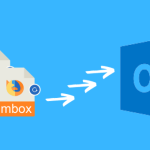Attention all legal professionals! Are you ready to unlock the secret code to effectively market your law firm in the ever-evolving world of business? Look no further, because today we’re diving deep into a topic that will revolutionize your marketing strategy: How to Market a B2B Law Firm Differently Than a B2C Law Firm. Whether you specialize in corporate law or cater to individual clients, this blog post will arm you with game-changing insights and innovative tactics that will set your firm apart from the competition. So buckle up and get ready for an exhilarating journey through the realm of B2B vs. B2C marketing strategies specifically tailored for law firms. Let’s dive in!
Introduction: Defining B2B and B2C Law Firms
When it comes to the legal industry, there are two main types of law firms – Business-to-Business (B2B) and Business-to-Consumer (B2C). While both types of law firms provide legal services, they cater to different types of clients and have distinct marketing strategies.
To understand how to effectively market a B2B or B2C law firm, it is important to first understand the differences between these two types of firms. In this section, we will define what B2B and B2C law firms are and discuss their unique characteristics.
What is a B2B Law Firm?
A Business-to-Business (B2B) law firm primarily offers legal services to corporate clients. These clients can range from small businesses to large corporations. The main focus of a B2B law firm is on providing legal advice and representation for business-related matters such as mergers and acquisitions, contract negotiations, intellectual property protection, employment disputes, and tax issues.
Some examples of typical clients for a B2B law firm include banks, insurance companies, manufacturing companies, consulting firms, technology startups, and other businesses with complex legal needs.
Understanding the Different Target Audience
One of the key aspects of effectively marketing a law firm is understanding and identifying the different target audiences that may be relevant to your practice. While both BB (business and banking) law firms and BC (family and personal injury) law firms fall under the umbrella of legal services, their target audiences can vary significantly.
1. Business Clients vs. Individual Clients
The first major difference between BB and BC law firms is the type of clients they cater to. BB law firms primarily work with businesses, corporations, and financial institutions, while BC law firms typically represent individual clients in family matters or personal injury cases.
This distinction is crucial as it affects every aspect of marketing strategies – from messaging to branding to channels used for reaching potential clients.
2. Different Needs and Pain Points
Business clients have different needs and pain points compared to individual clients. For example, a business client might require legal assistance with mergers and acquisitions or contract negotiations, while an individual client might need help with child custody or compensation for a workplace injury.
Understanding these varying needs will allow you to tailor your marketing campaigns accordingly. For instance, showcasing successful case studies in similar business transactions would be more relevant for a BB law firm’s website than highlighting testimonials from personal injury cases.
3. Demographics and Psychographics
Another crucial factor in targeting different audiences is understanding their demographics and psychographics – age, gender, income level, education level, interests, values, etc. These characteristics can help determine which channels are most effective for reaching each audience.
– Identifying the target audience for a B2B law firm
Identifying the target audience is a crucial step in any marketing strategy, and this holds true for B2B law firms as well. Understanding who your potential clients are and what their needs and pain points are will help you create effective marketing campaigns that will resonate with them.
So, who exactly is the target audience for a B2B law firm? In simple terms, it is other businesses. However, there are specific factors to consider when identifying the target audience for a B2B law firm that sets it apart from a B2C law firm.
1. Industry/ Niche: The first step in identifying your target audience is to determine the industry or niche your B2B law firm specializes in. This will help you narrow down your focus and tailor your marketing efforts accordingly. For example, if your firm primarily deals with technology companies, then your target audience would be CEOs and legal departments of such companies.
2. Company size: Another important factor to consider when identifying the target audience for a B2B law firm is company size. The needs and challenges of small businesses differ significantly from large corporations, so understanding the size of businesses you want to cater to can help you refine your messaging and approach.
3. Decision-makers: Unlike B2C firms where individuals make purchasing decisions, in a B2B setting, multiple decision-makers are involved in the buying process. It could be CEOs, legal departments, procurement teams, or even board members depending on the type of service or solution offered
– Identifying the target audience for a B2C law firm
Identifying the target audience for a B2C law firm is a crucial step in developing an effective marketing strategy. Unlike B2B law firms, which primarily cater to businesses and organizations, B2C law firms deal directly with individual consumers. This means that their target audience is vastly different from that of a B2B law firm, and therefore requires a different approach when it comes to marketing.
So, who exactly is the target audience for a B2C law firm? The answer may seem simple – individuals who require legal services. However, it’s essential to dig deeper and understand the specific demographics and psychographics of this group.
Demographics refer to characteristics such as age, gender, income level, education level, etc., while psychographics are more focused on attitudes, values, interests, and lifestyles. By understanding both these aspects of your target audience, you can tailor your marketing efforts to resonate with them effectively.
When it comes to demographics, the target audience for a B2C law firm can vary depending on the type of legal services they offer. For example, if your firm specializes in family law cases such as divorce or child custody battles, your main demographic would be adults aged 25-54 years old who are married or have children.
On the other hand, if your focus is on personal injury cases or medical malpractice suits, your target audience would include individuals of all ages who have been involved in accidents or suffered injuries due to negligence.
Differences in Marketing Strategies
When it comes to marketing a law firm, one of the most important factors to consider is understanding the differences in marketing strategies between different types of law firms. This is especially true when it comes to BB (big business) and BC (small business) law firms. While both may offer legal services, they operate in vastly different environments and therefore require unique approaches to marketing.
1. Target Audience
The first major difference in marketing strategies for BB and BC law firms lies in their target audience. BB law firms typically cater to large corporations and high-net-worth individuals, while BC law firms often provide services to small businesses and individual clients. As such, the messaging and tactics used to reach these audiences will vary significantly.
For a BB law firm, the focus should be on establishing credibility and expertise in handling complex legal matters. This can be achieved through thought leadership content, such as blog articles or whitepapers that showcase the firm’s knowledge and experience in a particular area of practice. In contrast, a BC law firm may want to highlight its personalized approach to working with smaller businesses or individuals by showcasing client testimonials or featuring community involvement initiatives.
2. Branding
Branding is another key aspect where BB and BC law firms differ in their marketing strategies. A strong brand identity is crucial for any business, but for BB law firms competing against other well-established big players, it becomes even more critical.
In this case, branding efforts must focus on creating a powerful image that sets the firm apart from its competitors
Leveraging Digital Marketing Tools for B2B and B2C Law Firms
In today’s digital age, having a strong online presence is essential for any business, including law firms. However, the approach to digital marketing for B2B (business-to-business) and B2C (business-to-consumer) law firms may vary. While both types of firms may offer similar legal services, their target audience and marketing strategies differ significantly.
Leveraging digital marketing tools can help both B2B and B2C law firms in reaching their respective target markets effectively. Here are some key ways in which these tools can be utilized to market a BB or BC law firm differently:
1. Utilizing Social Media Platforms:
Social media has become an integral part of our daily lives, and it offers great potential for law firms to reach out to their target audience. For B2B law firms, LinkedIn is the most effective platform as it caters specifically to businesses and professionals. Through LinkedIn, lawyers can connect with other businesses and individuals who may require their legal services.
On the other hand, B2C law firms should focus on social media platforms like Facebook, Instagram, and Twitter to reach out directly to consumers. These platforms allow for more visual content that can showcase the firm’s expertise and personality while also engaging with potential clients.
2. Creating Valuable Content:
Content marketing is an effective tool for both B2B and B2C law firms. However, the type of content produced should vary based on the target audience. For B2B firms, it is essential to create informative and educational content that addresses the specific pain points and challenges of businesses.
For B2C firms, the content should be more relatable and engaging to consumers. This can include case studies, success stories, blog posts, and social media content that highlights the firm’s services and achievements.
3. Search Engine Optimization (SEO):
SEO plays a crucial role in increasing online visibility for both types of law firms. However, the keywords and strategies used may vary depending on the target audience. For B2B firms, incorporating industry-specific keywords into their website content can help attract potential clients searching for legal services in their niche.
For B2C firms, focusing on location-based SEO can help them rank higher in local search results when potential clients are looking for legal services in their area.
4. Email Marketing:
Email marketing is a cost-effective way to reach out to potential clients for both B2C and B2B attorneys. However, the approach may differ based on the type of firm.
Conclusion
In today’s competitive legal landscape, it is crucial for law firms to differentiate themselves in order to stand out and attract clients. By following our tips on how to market a B2B law firm differently than a B2C law firm, you can create a targeted and effective marketing strategy that speaks directly to your intended audience. Whether you are focused on business clients or individual clients, understanding the unique needs and preferences of each will help you tailor your approach and ultimately drive success for your firm. With the right marketing techniques, your B2B or B2C law firm can reach new heights and establish itself as a leader in the industry.


